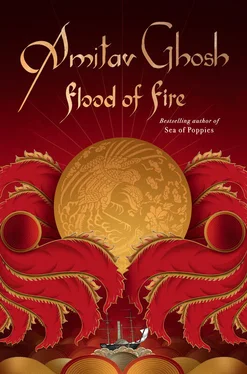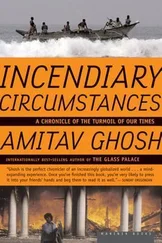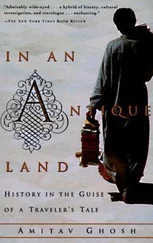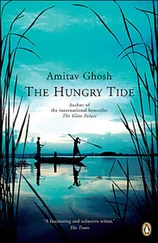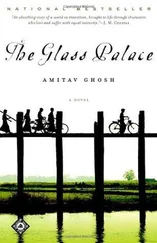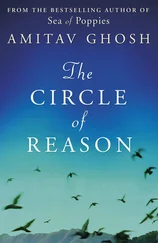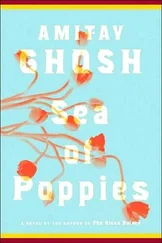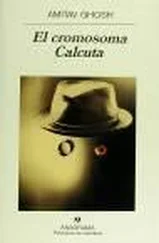Why? said the recruits.
Who knows? It’s just one of their whims.
Then Hukam Singh went to fetch his knapsack and the boys saw that an almost-spherical brass lota was strapped on top of it: Hukam Singh told them that by regulation this utensil had to be of a size to carry exactly one seer of water, and it had to be tied on with a string, so that it could be lowered into wells if necessary. The lota had to be on your knapsack at all times, even in battle; if it wasn’t properly secured you could get into a lot of trouble. On the parade ground officers loved nothing more than to see a gleaming string of lotas, lined up straight and glinting in the sun. At equipment inspections lotas were the first thing to be examined and punishments were freely handed out if they weren’t properly polished.
Over the next few minutes, with the boys looking on eagerly, an extraordinary array of objects emerged from Hukam Singh’s knapsack, one by one: an iron tawa to make rotis; a six-foot by three-foot durree to sleep on; pipeclay to apply on leather belts and footwear; a chudder to wrap up in at night. The total weight of a fully-packed knapsack, said Hukam Singh, was half a maund, about fifty pounds; it took a long time to get used to it.
Then came a folded garment.
Patloons — these are worn over the jangiah.
The pantaloons puzzled the recruits. The garment looked like a pyjama but they could see no drawstrings. Nor could Kesri understand how he was to climb into something with such a narrow waist.
Hukam Singh showed him how the garment’s waist was unbuttoned — but even then Kesri had some difficulty in wriggling into it. He had never worn anything that clung so tightly to the skin and when he looked down he could hardly recognize his own legs. They seemed much longer than they were in a dhoti — and stronger too, because of the way the fabric hugged his muscles.
The recruits were watching wide-eyed and one of them said: But what do you do if you have to make water? Do you take the whole thing off?
No.
Hukam Singh showed them how the front flap of the pantaloons could be lowered by undoing a couple of buttons.
Kesri could not see that this was of much help. Flexing his knees, he said: But I’m still not able to squat.
When you’re wearing patloons, said Hukam Singh, you can’t squat to piss.
The recruits goggled at him: You mean you pass water standing up?
Hukam Singh nodded. It’s difficult at first, he said. But you get used to it in time.
Reaching into the knapsack again, Hukam Singh produced the next item: it was a sleevelesss vest that was fastened with ties, not unlike those that Kesri normally wore with his dhotis. Then came a bright flash of colour: a scarlet coattee.
This was called a koortee, Hukam Singh explained; it was similar to the red coat of an English trooper, except that they called it a ‘raggy’. He showed Kesri how to get into it, by reaching back and thrusting his arms through the sleeves.
The front of the koortee was fastened with leather laces and when these were drawn tight Kesri had difficulty in drawing breath. He looked down at the jacket and saw that the rows of horizontal stripes on its front had come to life and were stretched like plumage across his chest. Studded between them were shining, metal buttons. Are these made of gold?
No, said Hukam Singh. They’re made of brass, but they’re still expensive. If you lose one they’ll dock your pay for eight annas.
Eight annas! This was more than Kesri had ever paid for an article of clothing. But the price did not seem excessive — if the buttons had been made of real gold they could not have been brighter or more becoming.
At the throat of the koortee there was another set of laces, and before tightening these Hukam Singh took out a bead necklace. He put it on Kesri so that the brightest beads were framed by the koortee’s stiff, gold-edged collar.
The beads too were paid for by the Company, Hukam Singh explained. The officers insisted that sepoys wore them. If lost, two weeks’ wages would be deducted from your salary.
With the laces at the neck drawn taut, the collar was like a yoke. When a kamar-bandh was tightened around his waist, it was as if he had been trussed like a chicken. Kesri could barely turn his head, and his chin was pushed up in such a way that his throat hurt when he tried to talk.
How could a man fight all bundled up like this?
Hukam Singh showed him how to stand erect, with his head tilted back.
When you’re in a koortee, you can’t let your head droop, he said. Your eyes have to be up and your shoulders have to be straight.
As he squared his back, Kesri caught a glimpse of the upcurved yellow extensions on the shoulders of the koortee. They were like the tips of an eagle’s wings, and it seemed to Kesri that his shoulder had never seemed so broad or so strong.
All through this Kesri’s head had been covered, as usual, by a cotton bandhna. His hair was tied up under it, in a coil.
Now Hukam Singh reached up and whipped off the bandhna so that his hair fell down over his shoulders. You’ll have to cut your hair shorter, he said. The officers won’t let you tie it in a coil under the topee.
Then, reaching into another bag, he produced a huge, two-foot-high, cloth-covered object that looked like a beehive.
When the topee was placed on his head, Kesri’s chin sagged into the points of the collar, almost choking him. It weighed as much as a pile of bricks.
Hukam Singh laughed at the expression on Kesri’s face. Removing the topee from Kesri’s head, he showed the recruits what was inside: hidden under the outer wrappings of cloth was an iron frame.
It’s heavy when you’re marching, he said, but you’ll be glad of it in a fight. It protects your head.
The recruits took it in turn to try the topee and afterwards they fell silent: its weight conveyed to them more graphically than anything they had yet heard, how different the future would be from the life they had known before.
*
As the anniversary of her English tutor’s death drew closer, Shireen grew increasingly nervous about her planned meeting with Zadig Karabedian. Thinking back, she could not understand why she had so readily agreed to meet with him — and that too without having the least idea of what he wanted.
Never before had she contemplated meeting a virtual stranger without the knowledge of her family. She knew that if any of her relatives — even her daughters — came to know of the assignation there would be much untoward talk. But nor could she forget how warmly Bahram had spoken of his old friend, Zadig Bey. To have him arrive on her doorstep was like being presented with a messenger from Bahram himself: it was almost as if he were reaching out to her from his grave.
Nossa Senhora da Gloria was only a short distance from the Mestrie mansion but to walk there, even with an escort of maids and khidmatgars might have excited comment, so Shireen decided to ask her brothers for a buggy instead. When the morning came she was glad she’d done so, for the sky was heavy with threatening banks of cloud.
The rain came pouring down as the carriage was pulling up to the churchyard gate. Fortunately the syces had come prepared and one of them escorted Shireen down the path with an umbrella. Leaving him to wait under the portico, she bought a few candles and made her way to the church’s doorway. It was dark inside: the tall windows were shuttered against the rain and the interior was lit only by a few flickering lamps.
Shireen’s face was covered with one of the loosely knitted shawls that she used as veils when she left the family compound. Now, looking through the shawl’s apertures, she spotted a tall figure sitting in a pew halfway between the entrance and the altar. She advanced slowly up the nave, holding her veil in place with her teeth, and on drawing level she checked her step for just as long as it took to ascertain that the man was indeed Zadig Bey. Then she made a gesture to let him know who she was, and motioned to him to move further back, to a dark corner that was screened by a pillar. He answered with a nod and she proceeded towards the altar.
Читать дальше
